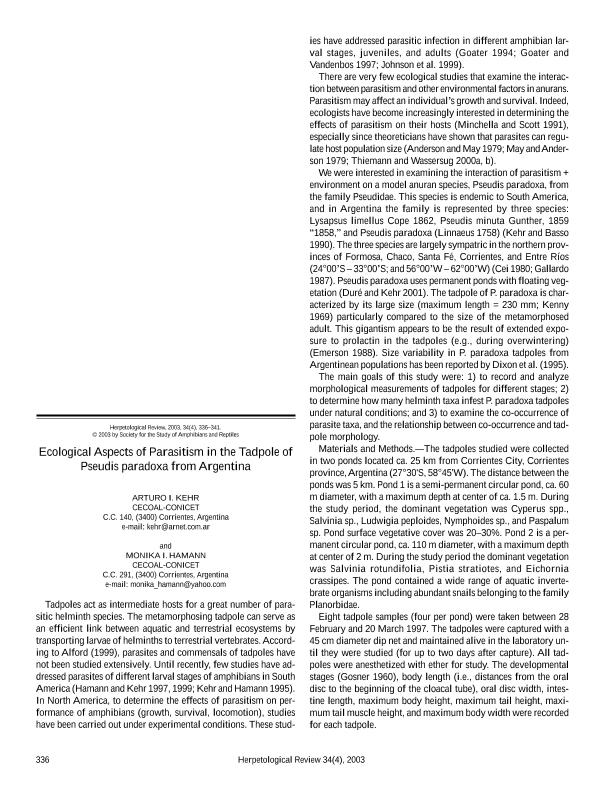Artículo
Ecological aspects of parasitism in the tadpole of Pseudis paradoxa from Argentina.
Fecha de publicación:
12/2003
Editorial:
Society for the Study of Amphibians and Reptiles
Revista:
Herpetological Review
ISSN:
0018-084X
Idioma:
Inglés
Tipo de recurso:
Artículo publicado
Clasificación temática:
Resumen
This study has addressed parasitic infection in different amphibian larval stages, juveniles, and adults. Pseudis paradoxa uses permanent ponds with floating vegetation. The tadpole of P. paradoxa is characterized by its large size (maximum length = 230 mm) particularly compared to the size of the metamorphosed adult. This gigantism appears to be the result of extended exposure to prolactin in the tadpoles (e.g., during overwintering). The main goals of this study were: 1) to record and analyze morphological measurements of tadpoles for different stages; 2) to determine how many helminth taxa infest P. paradoxa tadpoles under natural conditions; and 3) to examine the co-occurrence of parasite taxa, and the relationship between co-occurrence and tadpole morphology.
Palabras clave:
Tadpoles
,
Helm Inth Parasites
,
Corrientes
,
Argentina
Archivos asociados
Licencia
Identificadores
Colecciones
Articulos(CECOAL)
Articulos de CENTRO DE ECOLOGIA APLICADA DEL LITORAL (I)
Articulos de CENTRO DE ECOLOGIA APLICADA DEL LITORAL (I)
Citación
Kehr, Arturo Ignacio; Hamann, Mónika Inés; Ecological aspects of parasitism in the tadpole of Pseudis paradoxa from Argentina.; Society for the Study of Amphibians and Reptiles; Herpetological Review; 34; 4; 12-2003; 336-341
Compartir




